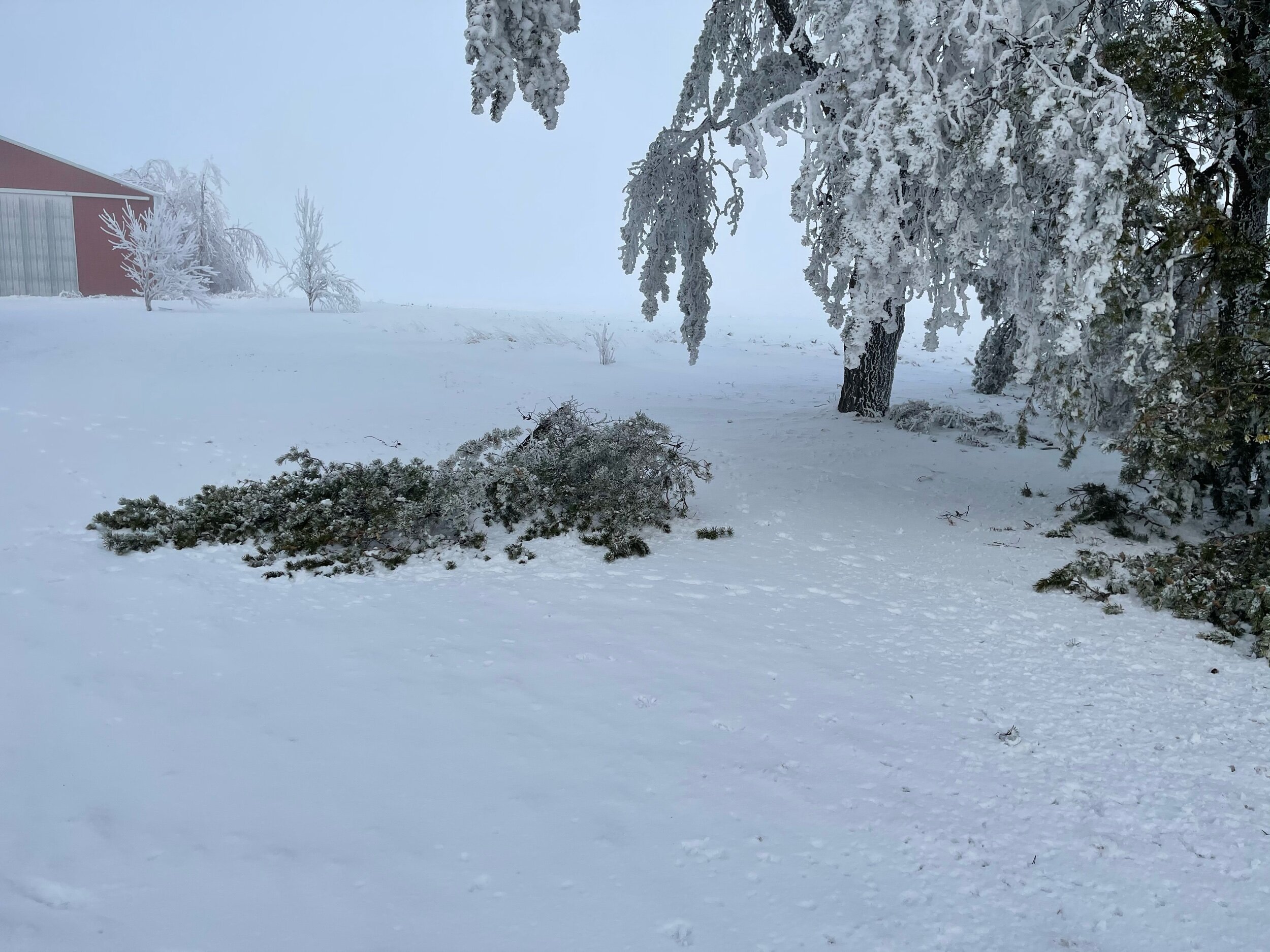Winter Lessons
I grew up right near where I live now and, while I moved away for sizeable chunk of time in-between, I have lived in northern Illinois in one place or another for most of my life. And, given the way our seasons work here, about half that time has been in the winter.
One would think, after all that time, that one had seen it all. But every time one thinks that, winter out here says “hold my beer”, and then we get something like we’ve had over the past week.
It all started with freezing rain changing into snow. While this is treacherous - loose powder on top of a sheet of ice makes steps, sidewalks, and streets an impromptu and undesirable skating rink - it’s not new in and of itself. We get to contend with that combination at least one or two times each winter, it seems. And it can offer some visual delights when it happens, something to appreciate as long as you don’t really need to go anywhere in a hurry.
But it was followed by freezing fog. This is much rarer - I don’t think I’d ever even heard of it until the past 10 years or so, after we moved out here. This is a situation where fog occurs when the ambient temperature is at or below freezing. It causes low visibility, just like fog always does...
...but because fog also keeps moisture suspended in the air at close to ground level, it also coats everything with that moisture. And, of course, then it freezes.
While it is considerably less common, we’ve had freezing fog out here a couple of times in the past decade. Mother Nature’s twist this time, the novel idea she came up with while she was in her cups, is to have it hang continuously for oh, say 3-4 days in a row.
It was like living in a Stephen King story. I’m just glad we were at home and not trapped in a supermarket. And when it lifted late in the day on Wednesday I was astonished to see that there were other houses on our road. It had been so long - I’d forgotten they were there...
The longer the fog went on, the more ice accumulated on, well, everything.
Looking out the windows each morning became an exercise in determining how many additional limbs had fallen from the day before, finally taken down by the accumulating weight. The remnants of the old tree line at the back of the house had a particularly hard time of it.
It also offered up the novel puzzle of trying to sort out why the garage door wouldn't open - each time I pushed the button the automatic opener would try, and then give up. Walking - carefully - around to the outside revealed a door so coated with ice that it now weighed more than the opener could lift.
Pro tip - gently smacking it gently with a rubber mallet is an effective removal approach. And it offers some exercise in the bargain as well. I’m sure it will soon be a part of a CrossFit routine.
While this was all going on I was mostly content to wait and observe, while being thankful that the power hadn’t gone out.
Which, of course it then did, in the wee, dark hours of Wednesday morning. Fortunately it was a brief event this time around, relatively speaking. I’ve gotten into the habit, when this happens, of driving along the power line network that feeds the house to see if I can find the break, and this time it was about a mile down the road and around the corner. Most houses in the area have some type of lighting that is on all night, so one can extrapolate if one is on the right track by looking for where the lighting ends. Once I found it I called it in to ComEd. I fancy that this makes it easier for the line workers to get us restored because at least they don’t have to find it first. I don’t know if it really makes a difference, but at least I feel like I’m doing something.
You know, I do like learning new things and all, but maybe someone could let Mother Nature know that I think I’m good when it comes to winter weather phenomena. And while you’re at it, maybe cut her off from the bar...


























